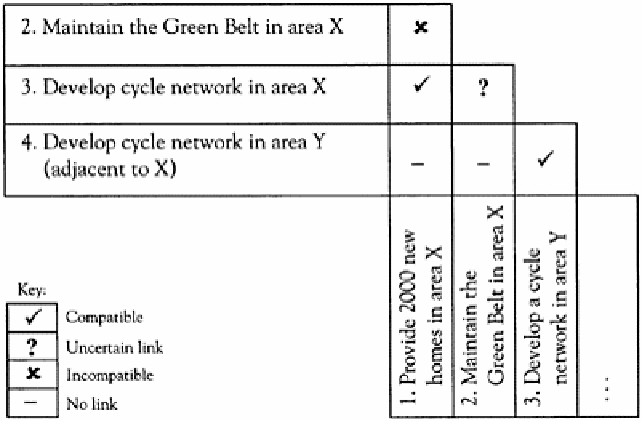Environmental Engineering Reference
In-Depth Information
• has a positive impact (+): if so, it might be possible to rewrite it to make it even more
positive;
• has an uncertain impact (?): if so, it may be necessary to collect further information
before the assessment can be completed, and the plan finalized;
• has an impact which depends on how the plan is implemented (I): if so, it may be
possible to rewrite the plan to ensure that it is implemented positively.
The focus of the assessment should not be on the symbol, but rather on making
appropriate changes to the plan: these are the
mitigation measures
required by the SEA
Directive. For some plans, or plan sub-components, it may be appropriate to carry out
more detailed, quantitative prediction of environmental impacts. Before a final list of
preferred options and/or plan sub-components is put forward, it may be useful to check
whether they are internally compatible. This is not strictly part of SEA, but can help to
ensure that the plan is robust and coherent. Table 12.6 shows how this can be done. A
similar process could be undertaken for the objectives at Stage A.
Table 12.6
Compatibility matrix (illustrative only)
Incompatibility between
objectives (X above)
Revision of objective(s) to eliminate
incompatibility
…or why objectives
should not be
revised
New housing likely to go
into the Green Belt in X
Either revise 1 or 2 or (if possible) amend 1
to ensure that new houses don't go into
Green Belt
…
(Based on Levett-Therivel 2004.)
D.
Consultation on the draft plan and environmental report
















Search WWH ::

Custom Search